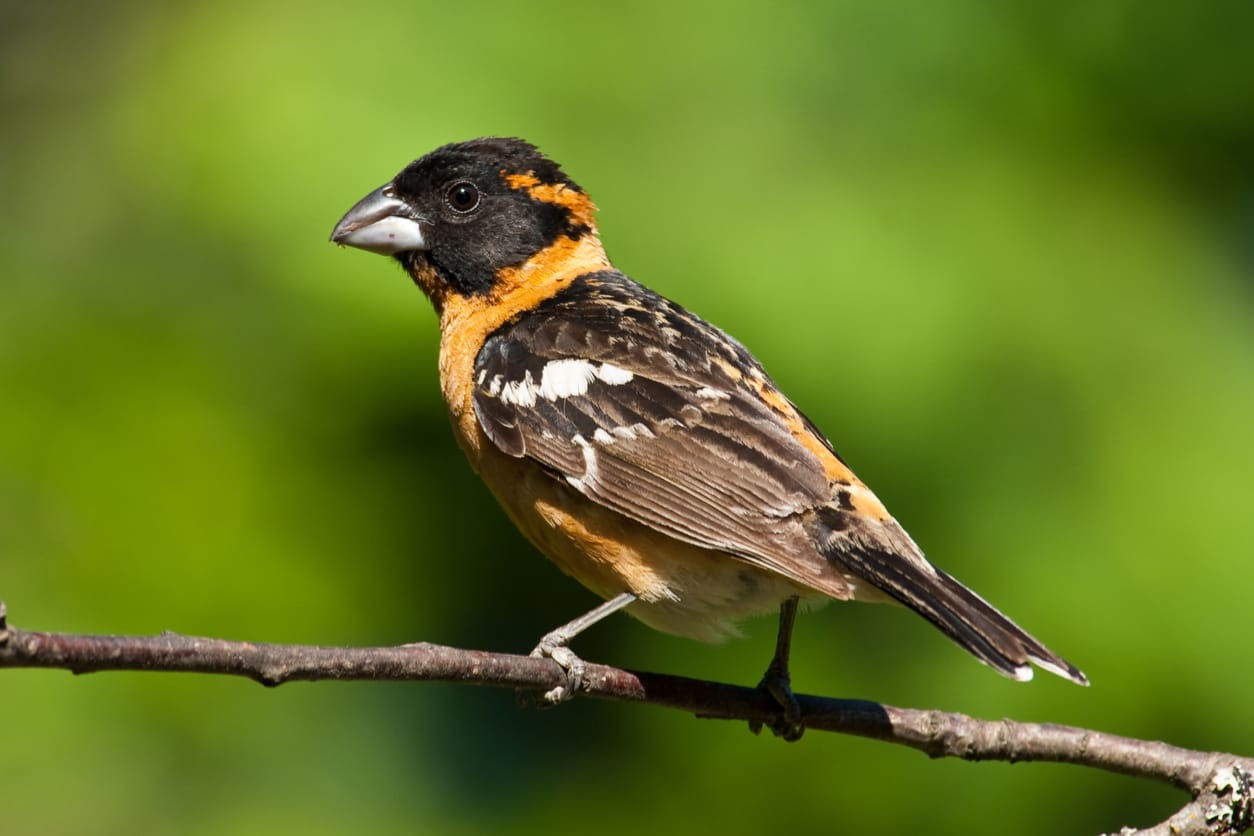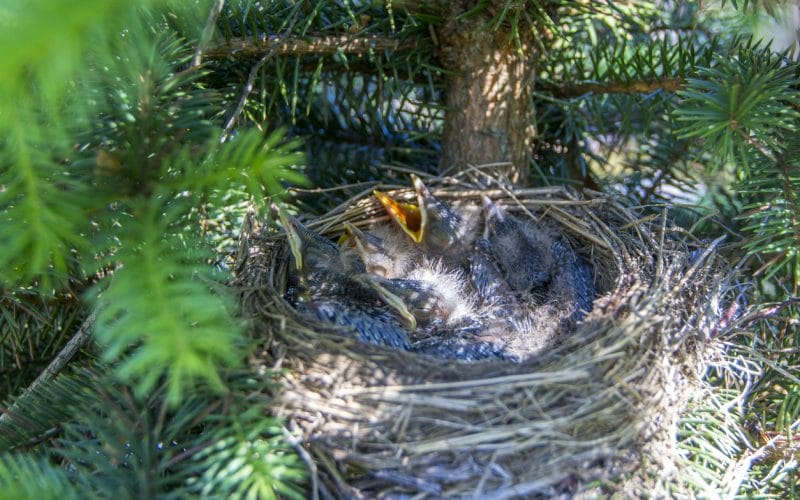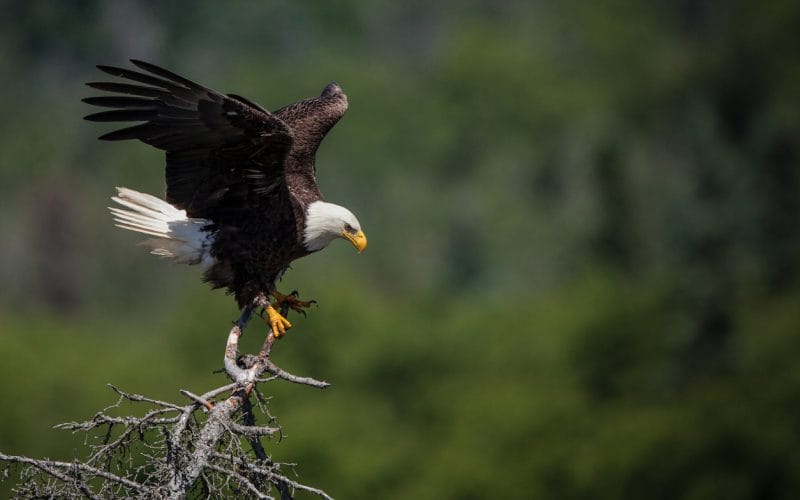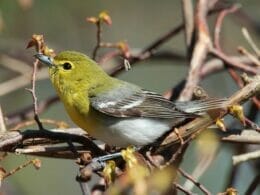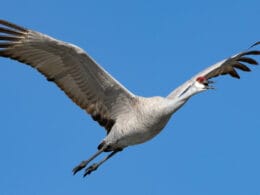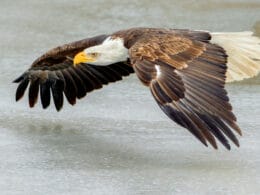Did you know that there are about 10,000 different bird species in the world? And that’s neglecting the fact that we could discover more at any time!
It’s hard to understand why there are so many species but one thing is for sure, bird enthusiasts would want to recognize as many of them as they can!
Today we’ll add a little extra to your arsenal of bird knowledge. In this article, we’ll talk about eight different birds with black heads.
For each bird, we’ll talk about appearance, migrations, feeding habits, and learn how to recognize their calls.
Top 8 Most Common Birds with Black Heads
1. Black-headed Grosbeak

- Scientific name: Pheucticus Melanocephalus
- Length: 7.1 – 7.5 inches
- Weight: 1.2 – 1.7 ounces
- Wingspan: 12.3 – 12.6 inches
Black-headed Grosbeak is a robin-sized bird that belongs to the Cardinal family.
Male Black-headed Grosbeak have a yellow belly that becomes more orange as you get to the throat. The head, tail, and wings are black with small white patches. The beak is gray, short, and big.
Top Tip: The female and the immature male look alike. They have brownish bellies with orange chests. They may or may not have those small white patches.
Black-headed Grosbeaks like to breed in the central, western, and northwestern states of America. Montana, Wyoming, Idaho, and Oregon are examples of states where you could find Black-headed Grosbeaks in summer.
In winter, they move towards the southern states where it gets a bit warmer. Still, it’s not uncommon for Black-headed Grosbeaks to breed in some southern states like New Mexico. On the other hand, these cardinals can be found all year long in Mexico.
Black-headed Grosbeaks feed primarily on flying insects and seeds. They like to rest on branches and wait for the unsuspecting prey to fly in their line of sight.
Both males and females of Black-headed Grosbeaks are loud singers. Their singing isn’t too distinctive and can often be mixed up with other birds.
2. American Redstart
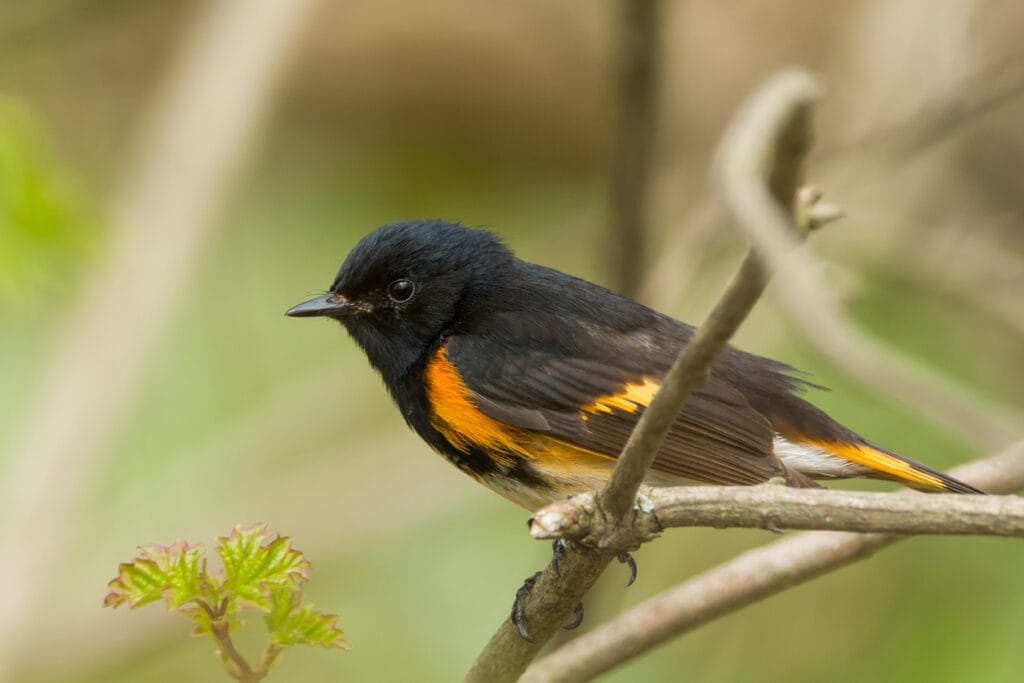
- Scientific name: Setophaga Ruticilla
- Length: 4.3 – 5.1 inches
- Weight: 0.2 – 0.3 ounces
- Wingspan: 6.3 – 7.5 inches
American Redstarts are medium-sized birds that belong to the Warbler bird family.
It’s easy to distinguish between male and female American Redstarts because of how different they look. Some people might even think they’re different species.
The males are covered with jet-black color that extends to the wings and tails. The chest is also black but it becomes yellow as you approach the white underbelly. There are some small yellow lines on the wings and tails.
The females start gray in the head area and get darker as you approach the tail. They have the same yellow lines on the wings and tails, but both the chest and the belly are white.
American Redstarts breed mostly in Canada and northeastern states like Pennsylvania and New York. In winter, they migrate to the central and southern states down to Mexico and even South America.
American Redstarts are extremely active birds and they rarely stay in one place. They keep jumping between branches until they find their next meal. That’s when they snatch flying insects mid-air.
American Redstarts singing may sound common at first but if you listen carefully, you’ll start to pick up a pattern that goes like “tit-tit-sew-sew-sew.”
3. Black Tern
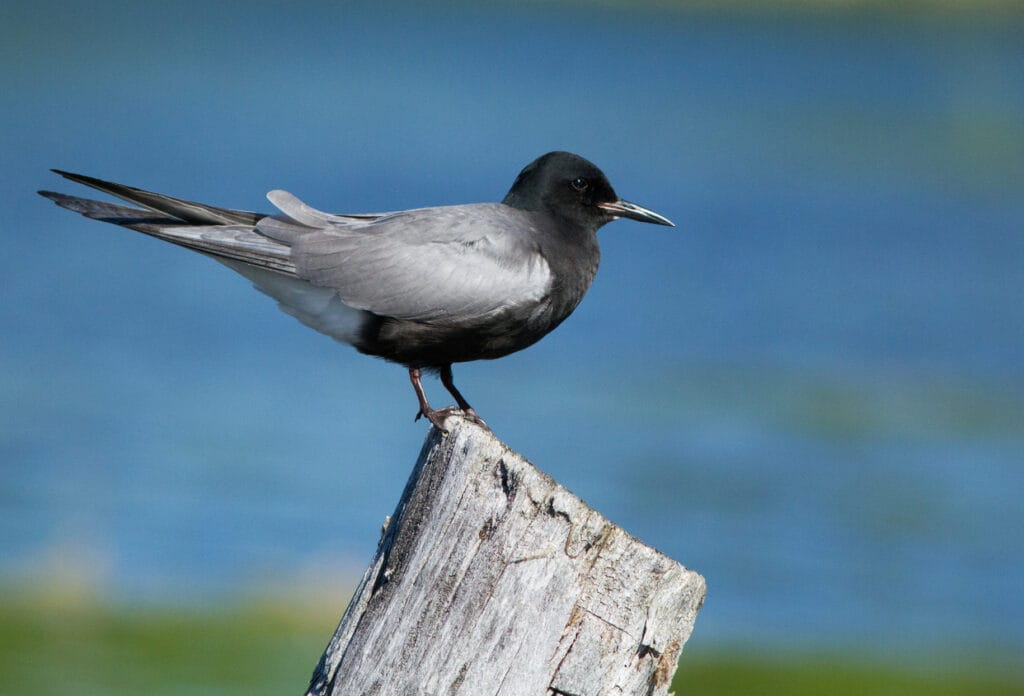
- Scientific name: Chlidonias Niger
- Length: 9.1 – 14.2 inches
- Weight: 1.8 – 2.1 ounces
- Wingspan: 22.4 – 23.6 inches
Black Terns are small and delicate seabirds that belong to the Tern family. Both their bills and wings are slender and pointed. Their tails and wings curve upwards as they get closer to their ends.
Top Tip: Black Terns have black heads, dark gray backs, and gray wings. The chest and belly areas are black and turn white as you approach the tail.
Black Terns breed in some parts of Canada and the northern states like North Dakota, Minnesota, and Montana.
In winter, they migrate south where you could see them in all the remaining states. They even migrate further south to Mexico and can be seen anywhere in the Gulf of Mexico.
Black Terns like to build their nests on a site that’s selected by both parents. It’s often away from the shore in an area with shallow water.
They hunt for food by flying slowly over the water looking for small fish. Once they locate a fish, they capture it by swooping. Black Terns don’t dive deep in the water as most Terns do. If the prey isn’t close to the surface, the Black Tern won’t attack it.
Black Terns are very social birds. Their migration flocks could range between 100 birds up to tens of thousands. Their singing consists of repeated short chirps that sound like a baby bird.
4. Phainopepla

- Scientific name: Phainopepla Nitens
- Length: 7.1 – 8.3 inches
- Weight: 0.6 – 1.0 ounces
- Wingspan: 10.6 – 11.4 inches
Phainopepla is a slender songbird that has a unique crest on its head. This beautiful bird belongs to the Silky Flycatcher family.
The name “Phainopepla” is Greek for “shining robe.” It makes sense because the bird is like a black robe flying in the sky.
We are gathering birds with black heads and Phainopepla fits right in because the entire bird is glossy black! The exception is some white fine lines on the wings and underbelly. The eyes are often red except for immature females who have brownish eyes.
Phainopepla breed mostly in Mexico but they can be found in the southern areas of some states. These states are California, Arizona, Nevada, and New Mexico. It’s also common to see Phainopepla in the Colorado Desert in California.
Phainopeplas feed mainly on fruits. Their favorite is desert mistletoe berries which they can often find between fall and spring. They also feed on flying insects, bugs, and caterpillars.
Phainopeplas have one of the simplest bird calls you might ever hear. The call sounds like repeated single whistles with a few seconds in between.
5. Dark-eyed Junco
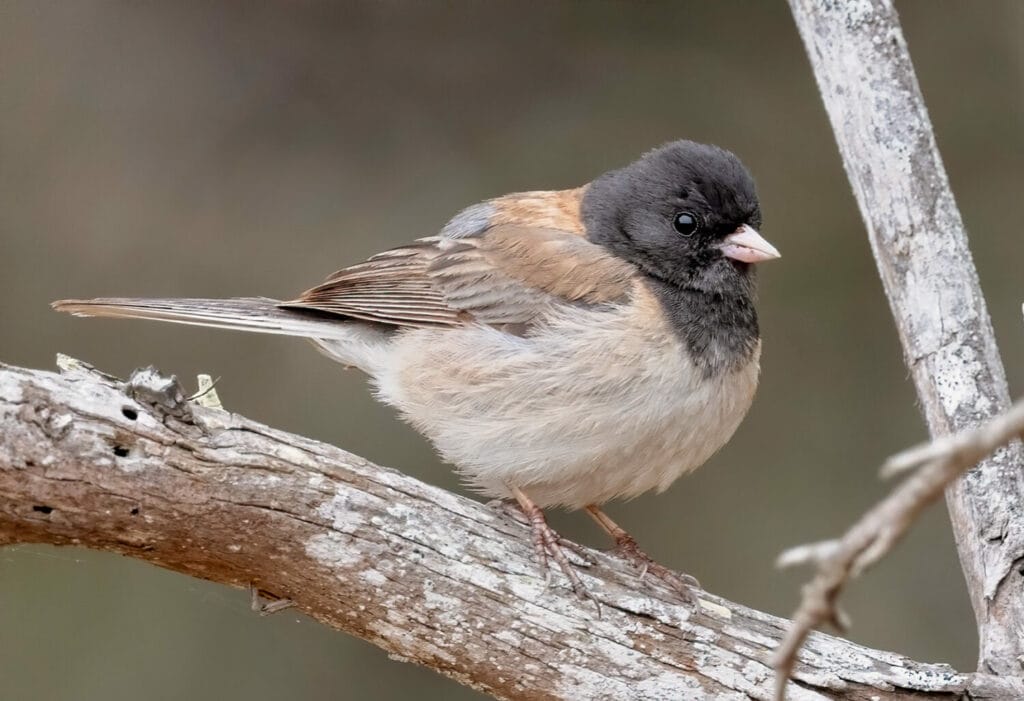
- Scientific name: Junco hyemalis
- Length: 5.5-6.3 in (14-16 cm)
- Weight: 0.6-1.1 oz (18-30 g)
- Wingspan: 7.1-9.8 in (18-25 cm)
The Dark-eyed Junco is a member of the sparrow family and there are some geographical variations in its plumage. While it is generally gray, white and brown, there is a black-headed sub species in Oregon.
The Dark-eyed Junco is a seed eater and usually forages on the ground. It can be seen at bird feeders but it’s natural habitat is in forested areas.
Partially migratory, some birds move to Canada and Alaska to breed and return to eastern parts of America. Other populations are resident all year round in the far northeast and northwest of the continental United States.
These lovely little birds are not only found in the U.S., they are found in Canada, Alaska and Mexico. Current estimates are that there are over 600 million of these birds in the Americas.
6. American Crow
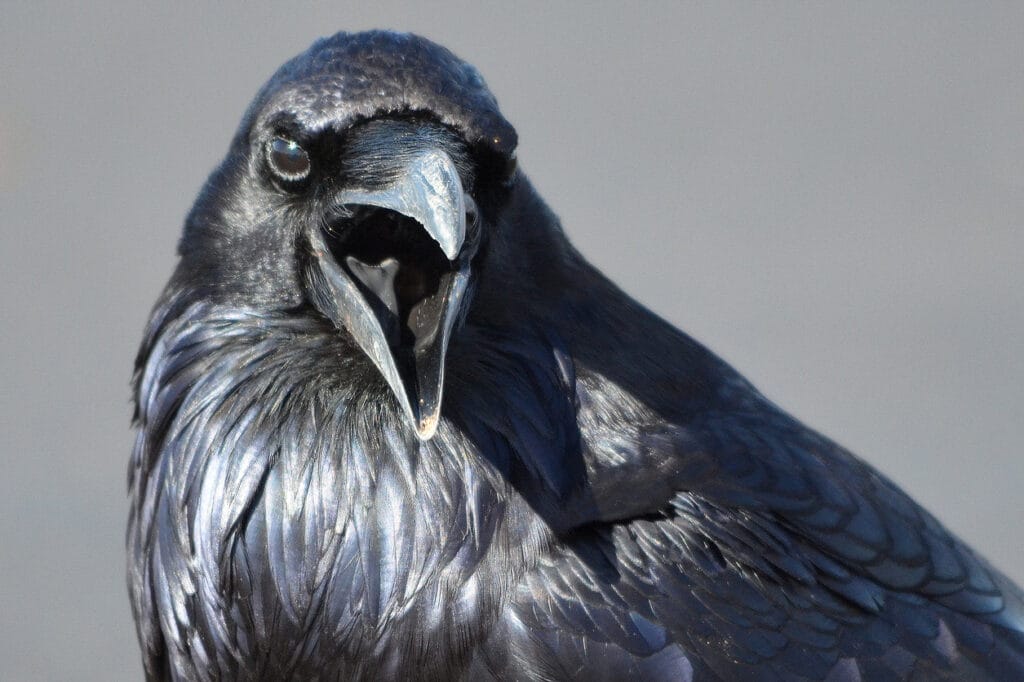
- Scientific name: Corvus Brachyrhynchos
- Length: 15.8 – 20.9 inches
- Weight: 11.2 – 21.9 ounces
- Wingspan: 33.5 – 39.4 inches
It’s hard to form a list of black-headed birds without including a crow in them. There are many crow species out there but we’ll use the American Crow as our only example.
American Crows are entirely black-colored, the heads, bodies, bills, legs, everything. However, when crows are molting, the old feathers could look brownish if compared to the new feathers.
Top Tip: American Crows breed in the southern parts of Canada. As for America, you can spot the American crow any day of the year in any American state. Every American should have seen the American crow at least once.
These crows are intelligent and have been known to either steal shining items from people. They could nest anywhere and you could casually spot them walking on the ground in search of food.
American Crows feed mainly on seeds, berries, and fruits. However, they could eat just about anything that can go inside their mouths. Their sharp talons allow them to prey on small animals like rodents and small rabbits.
American Crows are nest predators. They often invade the nests of other birds when they’re not around where they break their eggs and feed on the yolk.
Most people, including those who don’t know much about birds, are well aware of the Crows’ call. The American Crow’s call sounds like a short version of the usual “kaaaaa-kaaaaa” of crows.
7. Audubon’s Oriole

- Scientific name: Icterus Graduacauda
- Length: 7.5 – 9.4 inches
- Weight: 1.1 – 1.9 ounces
- Wingspan: 12.3 – 12.6 inches
Audubon’s Oriole is a relatively large songbird that belongs to the Icterids family of birds.
Audubon’s Orioles have long tails and a large head that seems somewhat disproportionate to their bodies. The bill is short but sharply pointed.
The adults have a beautiful yellow color through most of their bodies. The tails and heads are entirely black while the wings are black with white lines in between. The males have a slightly more vivid yellow color on their bodies.
Author Note: Audubon’s Orioles can be found all year long in some parts of Mexico and southern Texas. They prefer open woodlands where they find well-hidden spots in trees to build their nests.
For food, Audubon’s Orioles rely on fruits and small insects that fit in their mouths. If they sense that an insect is crawling inside a tree, they place their sharp bills inside the holes of the tree in hopes of catching that insect.
Audubon’s Oriole’s call sounds like a person who’s just beginning to learn how to whistle. Once you hear that slow and distinctive call, you should be able to locate the Audubon’s Oriole singing it with ease.
8. Bonaparte’s Gull
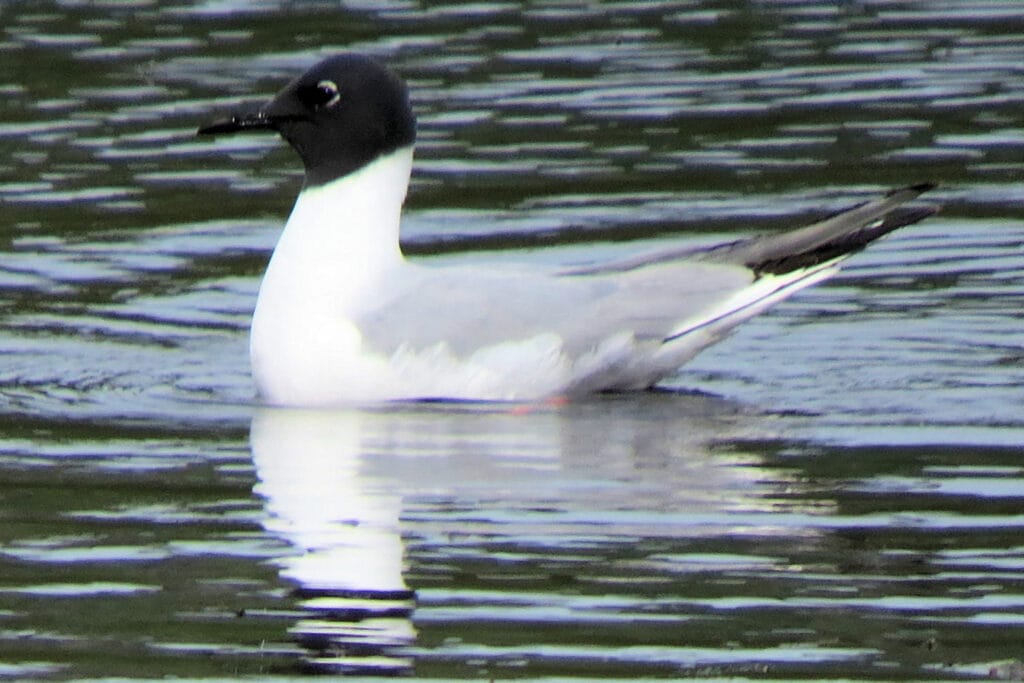
- Scientific name: Chroicocephalus Philadelphia
- Length: 11.0 – 11.8 inches
- Weight: 7.4 – 8.3 ounces
- Wingspan: 35.4 – 39.4 inches
Bonaparte’s Gull is a small tern-like gull that belongs to the Laridae family and it’s the second-largest bird on our list after the American Crow.
The name “Bonaparte’s Gull” comes in honor of the French zoologist Charles Lucien Bonaparte who is a distant cousin of Napoleon Bonaparte.
The breeding adults of Bonaparte’s Gull have black heads and tail ends. When they’re not breeding, their black heads are white or light gray instead. The body is generally white except for the wings which are light gray. There’s a yellow triangle at the end of the wings.
Bonaparte’s Gulls breed mainly in Canada and they’re only seen in the United States when they migrate in winter. You can see them in any state that’s not located in the southeast zone.
Bonaparte’s Gulls are the only gulls that build their nests in trees. However, Like most other Gulls, they feed on invertebrates and small fish. During breeding seasons, Bonaparte’s Gull’s diet consists mainly of insects.
Bonaparte’s Gulls usually stay in flocks and have a squeaking call that makes a “keek-keek-keeek” which increases in frequency.
A Few Extra Words
If you’ve come this far, then we hope you’ve enjoyed this short read. Keep in mind that our article is but a humble selection in the world of black-headed birds.
There are hundreds of other birds with black heads out there but we picked some of the ones you could spot if you live in the United States.
Keep in mind that many birds are suffering from declining numbers. If you happen to spot a bird you recognize, keep a safe distance and don’t try to catch or hurt it in any way. Let them fly. It’s their world too.
We hope you found our guide on birds with black heads useful!
FAQ
Probably that would be a chickadee. There are several species with black-heads and they are found across the U.S.
That would probably be the Black-headed Grosbeak. Look for an oversized bill to tell the difference.
The Black-crowned Night Heron has a crown rather than a full black head.




